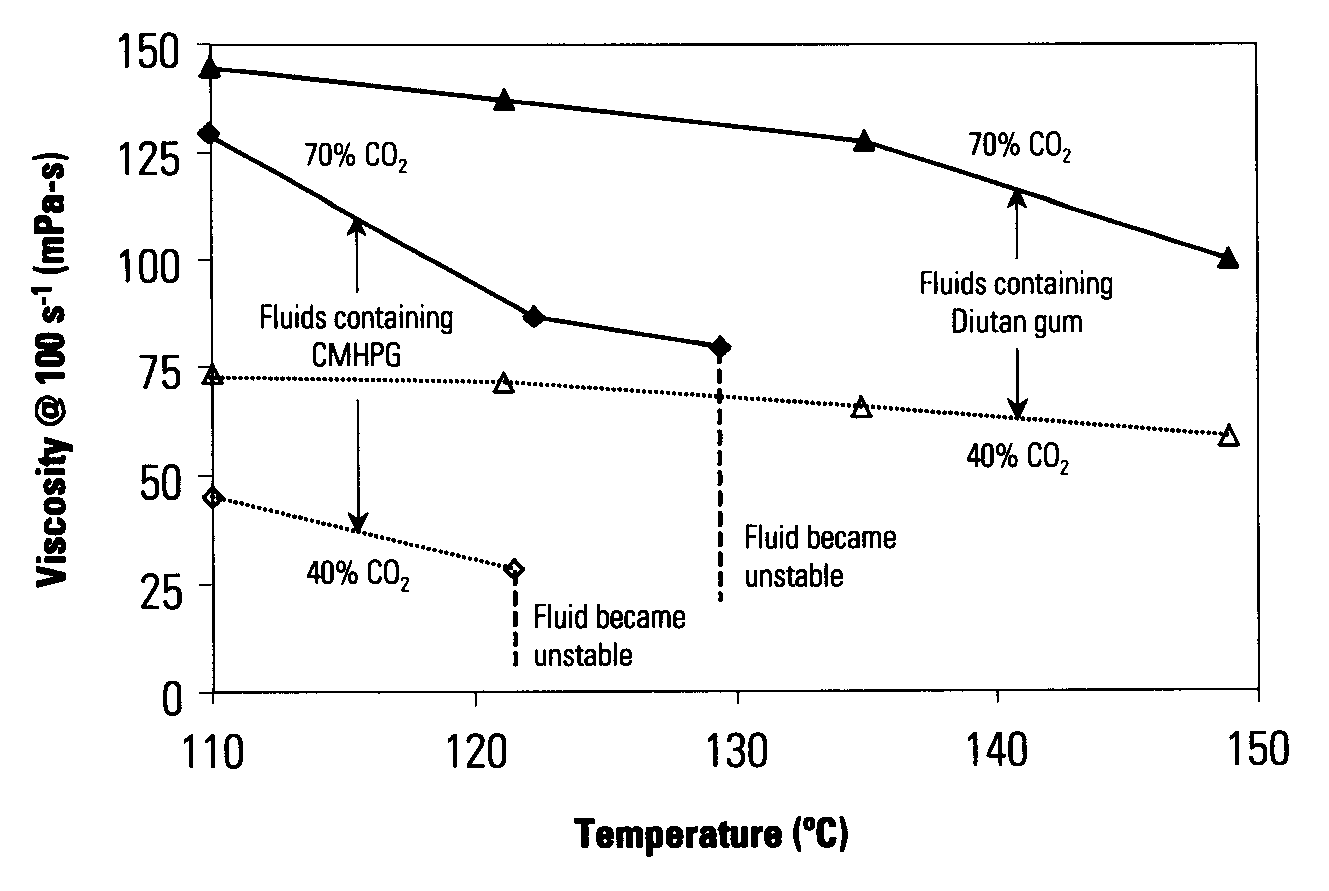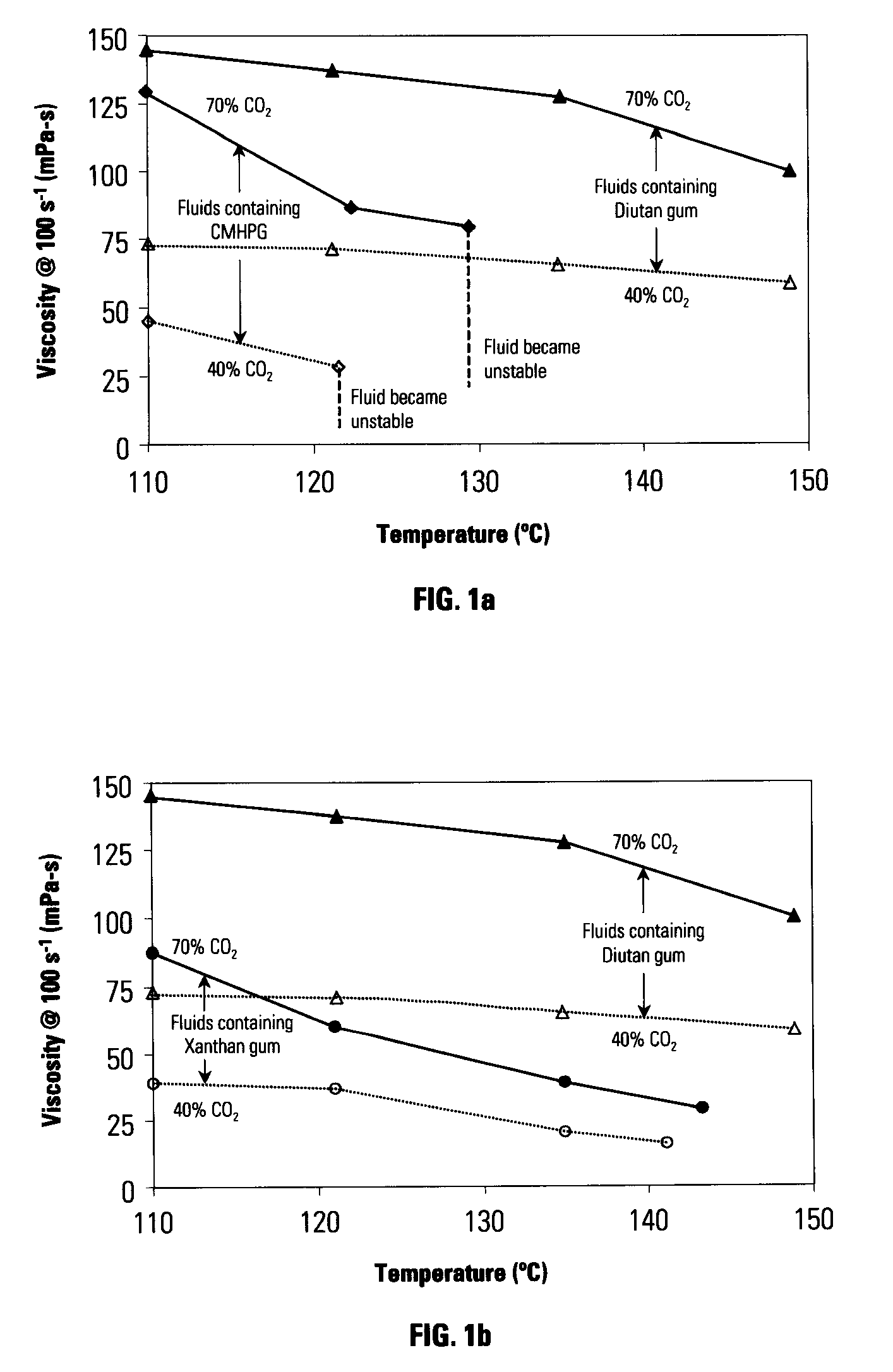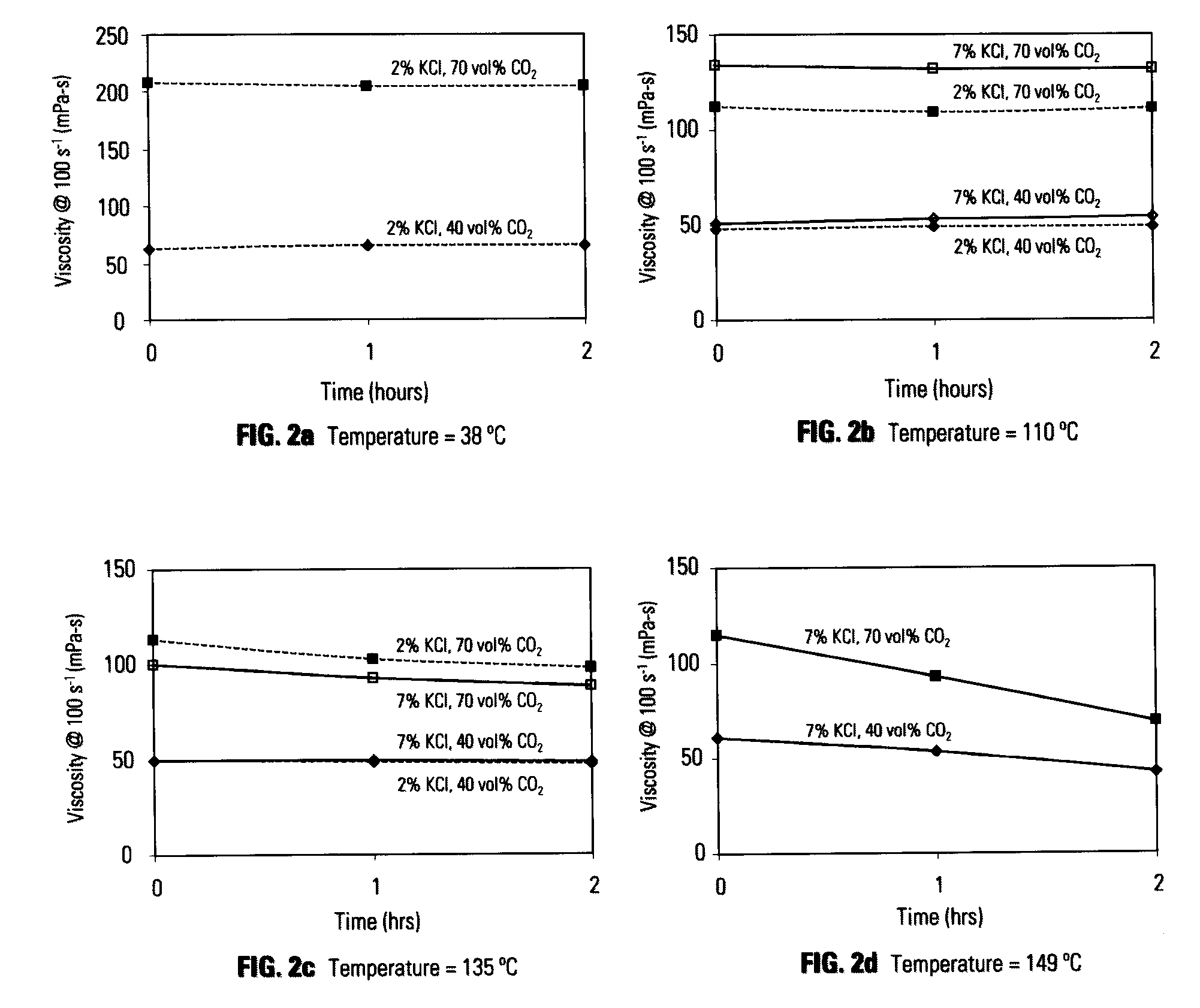Energized Fluids and Methods of Use Thereof
a technology of energized fluids and fluids, applied in the field of fluids, can solve the problems of increased resource and material requirements, poor proppant placement, and fracture to open, and achieve the effects of good proppant suspension and transport properties, good stability against phase separation, and adequate rheology
- Summary
- Abstract
- Description
- Claims
- Application Information
AI Technical Summary
Benefits of technology
Problems solved by technology
Method used
Image
Examples
example 1
[0059]FIG. 1 shows viscosity measurements at a shear rate of 100 s−1 for energized fluids of carbon dioxide dispersed in aqueous solutions of several polysaccharides. FIG. 1a shows such measurements for fluids containing a sphingan diutan gum heteropolysaccharide (available from CP Kelco of 123 North Wacker Dr, Suite 2000 Chicago, Ill. 60606 USA) (triangles) and of polysaccharide carboxymethyl hydroxypropyl guar gum (Galactasol 650® available from Aqualon Oil Field Chemicals, 5210 Mariners Harbor Houston, USA 77041) (diamonds). Results are shown for two different volume fractions of carbon dioxide (70 vol. %, filled symbols, and 40 vol. %, open symbols). All amounts and percentages are expressed in wt % of ingredient based upon total liquid phase weight (not including the gas component) unless otherwise indicated. The composition of the aqueous fluid containing heteropolysaccharide diutan gum is:
TABLE 1Ingredient% by weight of total liquid wtWater91.98Diutan gum0.22Potassium Chlor...
example 2
[0064]FIG. 2 is a series of graphical FIGS. 2a 2b 2c 2d which illustrate the viscosity of energized fluids comprising carbon dioxide as a function of time for temperatures that are meaningful to foam fracturing operations. The composition of the fluids used for the experiments depicted in FIG. 2a and FIG. 2b is 0.18 wt % heteropolysaccharide diutan gum, 0.3 wt % amphoteric alkyl amine Aquat 944®, potassium chloride was added at the wt % indicated in the plots, and carbon dioxide was added as indicated at the volume % based upon the total volume of gas phase and liquid phase. The composition of the aqueous fluid used for the experiments depicted in FIG. 2c is 0.18 wt % diutan gum, 0.3 wt % amphoteric alkyl amine Aquat 944®, 0.3 wt % tetraethylenepentamine, potassium chloride was added at the concentrations indicated in the plots, and carbon dioxide was added at the volume % indicated. The composition of the aqueous fluid used for the experiments depicted in FIG. 2d is 0.22 wt % diuta...
example 3
[0065] It was also found as part of this invention that increasing concentrations of electrolyte, potassium chloride for example, and an organoamino compound, for example tetraethylenepentamine, may further stabilize carbon dioxide in solutions containing heteropolysaccharides such as diutan gum. FIG. 3 shows a pair of graphical FIGS. 3a 3b which illustrate the positive effects of an electrolyte and an organoamino compound on energized fluid viscosity. FIG. 3a shows the viscosity of energized fluids containing carbon dioxide in an amount of 40% by volume based upon total fluid volume. The compositions of the solutions used in these experiments were 0.18 wt % diutan gum, 0.3 wt % amphoteric alkyl amine Aquat 944®, 2.0 wt % potassium chloride, but they differed in the amount of tetraethylenepentamine organoamino compound as indicated. As FIG. 3a indicates, including an organoamino compound improved fluid viscosity at elevated temperatures, 135° C. in this case, whereas a much lower vi...
PUM
| Property | Measurement | Unit |
|---|---|---|
| formation temperature | aaaaa | aaaaa |
| volume percent | aaaaa | aaaaa |
| volume percent | aaaaa | aaaaa |
Abstract
Description
Claims
Application Information
 Login to View More
Login to View More - R&D
- Intellectual Property
- Life Sciences
- Materials
- Tech Scout
- Unparalleled Data Quality
- Higher Quality Content
- 60% Fewer Hallucinations
Browse by: Latest US Patents, China's latest patents, Technical Efficacy Thesaurus, Application Domain, Technology Topic, Popular Technical Reports.
© 2025 PatSnap. All rights reserved.Legal|Privacy policy|Modern Slavery Act Transparency Statement|Sitemap|About US| Contact US: help@patsnap.com



